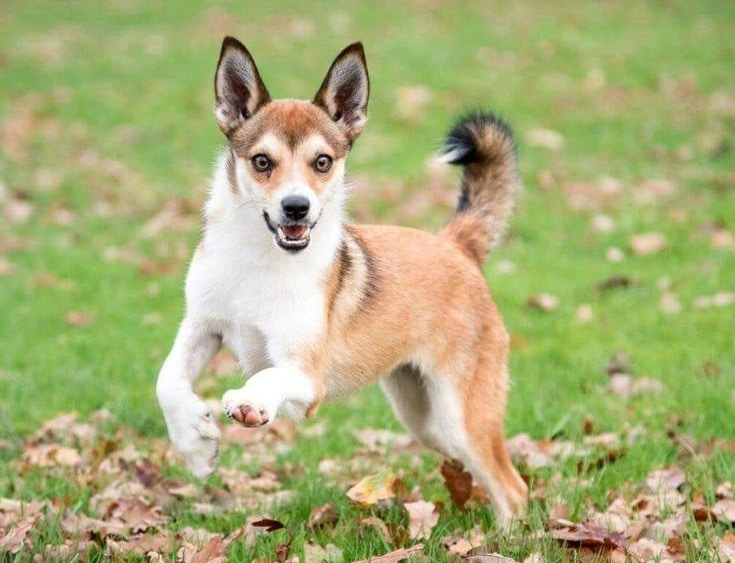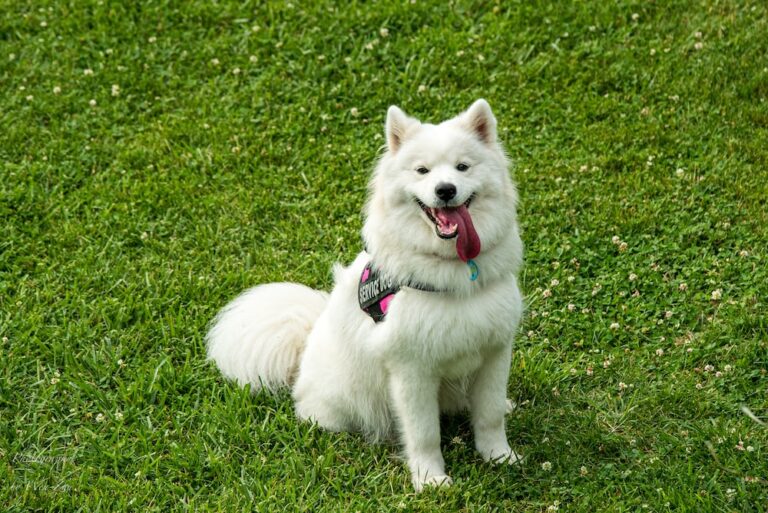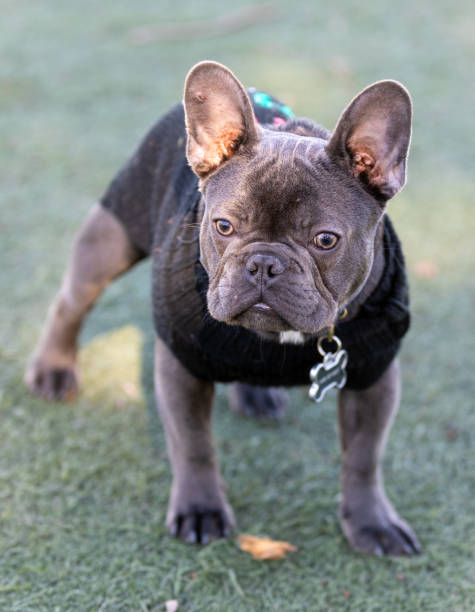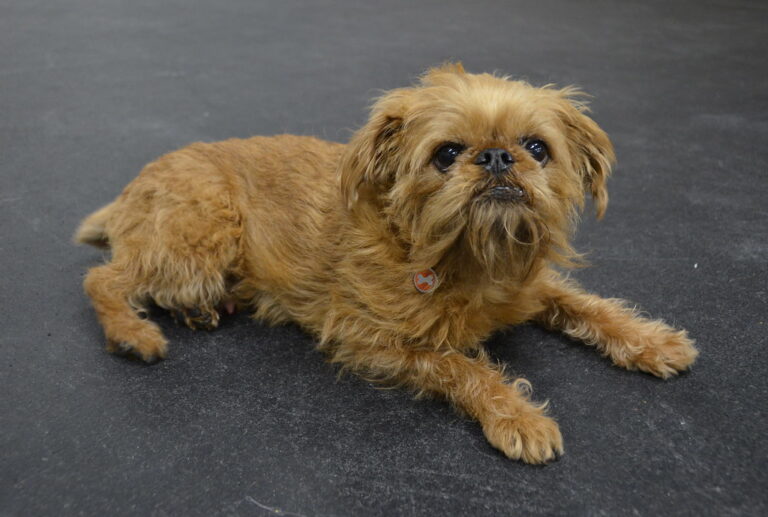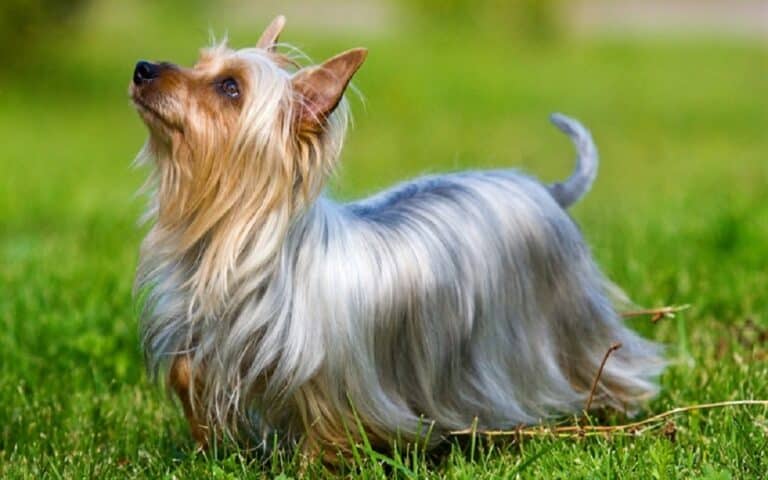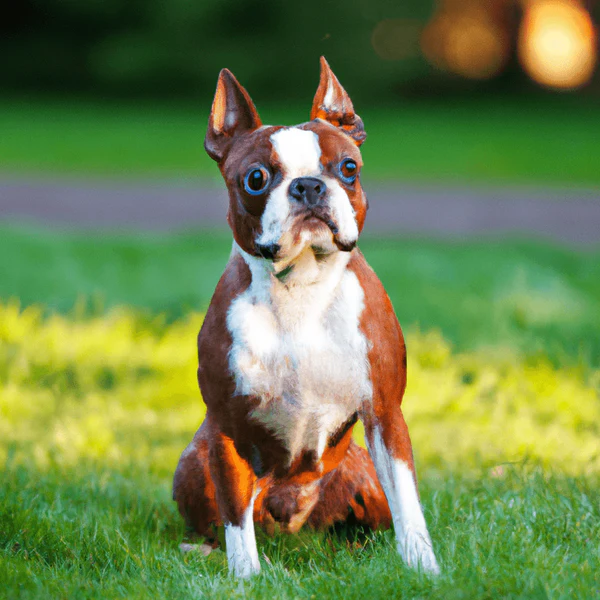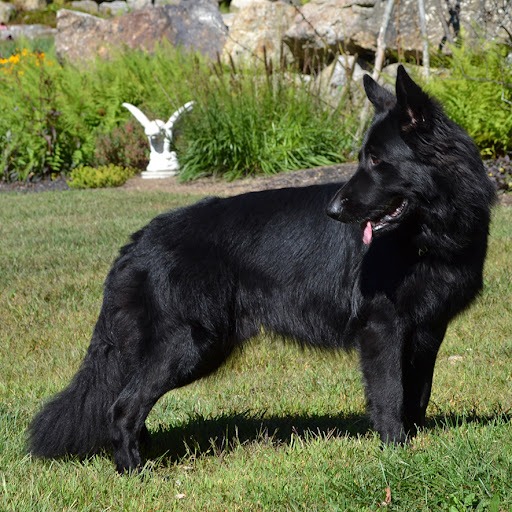The Norwegian Lundehund, known for its agility and alertness, is a unique and fascinating breed. Originating from Norway, this dog possesses distinct physical attributes that set it apart from other breeds. With its extra toes and flexible neck, the Norwegian Lundehund is not only a skilled climber but also an excellent hunter. In this dog breed guide, we will delve deeper into the characteristics, history, and care requirements of this remarkable dog breed. Whether you are a potential owner or simply interested in learning more about this agile and alert breed, this article will provide you with valuable insights.
Norwegian Lundehund
Origins of the breed
The Norwegian Lundehund, also known as the Puffin Dog, is a unique and ancient breed that originated in Norway. Its origins can be traced back several thousand years to the time of the Vikings. The Lundehund was specifically bred for the purpose of hunting puffins and other seabirds along the Norwegian coast.
Traditional use of the Lundehund
The Norwegian Lundehund possesses several distinctive characteristics that made it well-suited for its traditional hunting role. One of the most notable features of this breed is its extra toes. Unlike other dogs, the Lundehund has six fully functional toes on each foot, giving it an advantage when navigating steep and rocky terrains. Additionally, their joints are extremely flexible, allowing them to bend their head backward to touch their spine and rotate their front legs outwards, both of which are useful when maneuvering through narrow crevices and caves.
The Lundehund’s exceptional agility and alertness were highly valued by the Norwegian hunters. Its ability to climb cliffs, squeeze through small openings, and scale steep slopes made it an indispensable companion for catching puffins in their nesting sites. The breed’s remarkable sense of smell and hearing further aided in its success as a skilled hunter.
Decline and near extinction
Despite its historical significance and unique qualities, the Norwegian Lundehund faced a period of decline and near extinction in the early 20th century. The introduction of modern hunting methods and changing lifestyles led to a decreased demand for puffin hunting, consequently reducing the need for the Lundehund’s specialized skills.
By the 1960s, the breed’s population had dwindled to only a handful of surviving individuals. To prevent its complete extinction, a dedicated group of breed enthusiasts and geneticists collaborated to revive the breed. Through careful breeding programs and conservation efforts, the Norwegian Lundehund gradually regained its numbers and is now considered a rare but thriving breed.
Today, the Norwegian Lundehund is cherished not only for its historical significance but also for its unique physical attributes and friendly temperament. It continues to captivate dog enthusiasts around the world, who appreciate its agility, alertness, and the fascinating glimpse it provides into the ancient hunting practices of Norway.
Physical Characteristics
Distinctive features
The Norwegian Lundehund is known for its unique and distinctive features that set it apart from other dog breeds. One of its most notable features is its extra toes. Unlike other dogs that typically have four toes on their hind legs, the Lundehund has six toes on each hind foot. These additional toes provide the breed with increased dexterity and a better grip, making it an excellent climber.
Another distinctive feature of the Norwegian Lundehund is its flexible neck. This breed has the ability to bend its head backward to touch its spine, allowing it to turn its head 180 degrees in either direction. This remarkable flexibility enables the Lundehund to navigate through narrow crevices and tight spaces while hunting for puffins and other birds.
Muscular structure
The Norwegian Lundehund has a well-developed muscular structure that contributes to its agility and endurance. Despite its small size, this breed possesses strong and lean muscles, which allow it to move swiftly and with precision. Its muscular hindquarters provide the necessary power for jumping and climbing, making it excel in its hunting abilities.
The Lundehund’s strong and muscular shoulders and forelimbs provide the necessary strength and stability for maintaining balance while climbing rocky terrains. These muscles work in tandem with its well-built hindquarters, giving the breed the ability to traverse steep cliffs and uneven surfaces effortlessly.
Adaptations for climbing
The Norwegian Lundehund has unique adaptations that make it an exceptional climber. Its six-toed hind feet provide it with enhanced grip and stability, enabling it to traverse slippery surfaces with ease. The additional toes also act as natural crampons, allowing the Lundehund to cling onto steep rocks and cliffs without slipping.
Another adaptation for climbing is the Lundehund’s exceptionally flexible shoulder joints. These joints allow the breed to extend its forelimbs laterally, creating a wider base of support while navigating narrow ledges and crevices. The breed’s ability to spread its front legs apart at a 90-degree angle provides it with better balance and enables it to squeeze through tight spaces effortlessly.
In addition to its flexible shoulder joints, the Lundehund also possesses elastic cartilage in its neck and spine. This elasticity allows the breed to bend its head backward and touch its spine, making it highly adaptable to squeezing through tight tunnels and small openings.
Overall, the Norwegian Lundehund’s physical characteristics, distinctive features, muscular structure, and adaptations for climbing make it a truly agile and alert breed. Its unique traits enable it to excel in its role as a hunting dog and make it a fascinating and remarkable companion.
Temperament and Behavior
The Norwegian Lundehund is known for its unique and distinct temperament. This breed is often described as agile and alert, making them excellent companions for active individuals or families. Their natural curiosity and high energy levels ensure that they are always ready for adventure and exploration.
Intelligence and Trainability
Despite their small size, Norwegian Lundehunds are highly intelligent dogs. They possess a keen problem-solving ability and are quick learners. However, their independent nature can sometimes make training a bit challenging. It is important to establish a consistent and firm training routine from an early age to ensure successful obedience and behavior. Positive reinforcement techniques, such as treats and praise, work best with this breed.
Socialization and Interaction with Other Pets
The Norwegian Lundehund can be quite reserved and cautious around strangers, but they are generally friendly and affectionate with their family members. Proper socialization from a young age is crucial to ensure that they feel comfortable and confident in various situations. Early exposure to other pets, such as dogs and cats, can help them develop positive relationships and prevent any potential aggression or territorial behavior.
Exercise and Mental Stimulation
Due to their high energy levels, Norwegian Lundehunds require regular exercise and mental stimulation to stay happy and healthy. Daily walks, playtime, and interactive toys are essential to prevent boredom and destructive behaviors. Engaging in activities that challenge their problem-solving skills, such as puzzle toys or agility training, can also help keep their minds sharp and focused.
Overall, the Norwegian Lundehund is a fascinating breed with a unique temperament and behavior. With proper training, socialization, and plenty of exercise, they can make wonderful companions for those who appreciate their agile and alert nature.
Health and Care
Common health issues
Norwegian Lundehunds are generally a healthy breed, but like all dogs, they can be prone to certain health issues. It is important for owners to be aware of these potential problems and take the necessary steps to prevent or manage them.
One common health issue that Norwegian Lundehunds may face is gastrointestinal problems. Due to their unique digestive system, they can be more susceptible to issues such as food allergies, sensitivities, or digestive disorders. It is crucial to feed them a high-quality diet that is appropriate for their specific needs and to avoid any known allergens.
Another health concern for Norwegian Lundehunds is elbow and hip dysplasia. This is a hereditary condition where the joints in the elbows or hips do not develop properly, leading to pain, lameness, and mobility issues. Regular exercise, maintaining a healthy weight, and providing them with a supportive and comfortable environment can help reduce the risk and severity of these conditions.
Eye problems, including cataracts and progressive retinal atrophy (PRA), are also seen in some Norwegian Lundehunds. Regular eye examinations by a veterinarian can help detect any early signs of these conditions, allowing for early intervention and treatment.
Nutritional needs
To maintain optimal health, Norwegian Lundehunds require a balanced and nutritious diet. As an active and agile breed, they need a diet that provides them with the energy they need to sustain their high activity levels. It is important to choose a high-quality dog food that is specifically formulated for their size, age, and activity level.
Protein is an essential component of their diet, as it supports muscle development and repair. Look for dog foods that have high-quality sources of protein, such as chicken, turkey, or fish. Additionally, healthy fats, such as omega-3 fatty acids, are beneficial for their overall well-being and can help maintain healthy skin and coat.
It is also crucial to monitor their weight and adjust their food intake accordingly. Norwegian Lundehunds have a tendency to gain weight easily, which can put extra stress on their joints and increase the risk of developing joint problems. Feeding them smaller, more frequent meals and providing them with regular exercise can help prevent obesity and maintain a healthy weight.
Grooming and maintenance
The Norwegian Lundehund has a unique double coat that consists of a dense undercoat and a harsh, protective outer coat. Regular grooming is necessary to keep their coat healthy and free from mats and tangles.
Brushing their coat at least once or twice a week helps remove any loose hair and prevents it from matting. During shedding seasons, more frequent brushing may be required. Additionally, regular brushing stimulates the natural oils in their skin, promoting a healthy and shiny coat.
Their nails should be kept trimmed to a comfortable length to prevent overgrowth or potential injuries. It is recommended to trim their nails every few weeks or as needed. Regular dental care, such as brushing their teeth or providing dental chews, is also important to maintain good oral hygiene and prevent dental issues.
Lastly, regular exercise and mental stimulation are crucial for the overall well-being of Norwegian Lundehunds. They are an active and intelligent breed that requires both physical and mental challenges to thrive. Providing them with daily exercise, such as walks, runs, or interactive games, keeps them mentally engaged and helps prevent behavioral problems.
Choosing a Norwegian Lundehund
When considering adding a Norwegian Lundehund to your family, there are a few important factors to take into account. This unique breed requires special care and attention, so it’s essential to make an informed decision. Here are some key points to consider when choosing a Norwegian Lundehund:
Finding a reputable breeder
To ensure you are getting a healthy and well-bred Norwegian Lundehund, it is crucial to find a reputable breeder. Look for breeders who prioritize the health and welfare of their dogs and have a good reputation within the Lundehund community. A reputable breeder will provide you with all the necessary information about the breed, including health clearances and certifications.
When searching for a breeder, consider contacting breed clubs or organizations dedicated to Norwegian Lundehunds. These groups often have a list of approved breeders who adhere to strict breeding standards. Additionally, attending dog shows or events related to Lundehunds can provide an opportunity to interact with breeders and their dogs in person.
Assessing a puppy’s health
Before bringing a Norwegian Lundehund puppy home, it’s essential to ensure they are in good health. Schedule a visit to the breeder’s facility or home to meet the puppies and their parents. Observe the puppies for any signs of illness, such as coughing, sneezing, or discharge from the eyes or nose. A healthy Lundehund puppy should be energetic, playful, and have a shiny coat.
Ask the breeder for all relevant health clearances for both the sire and dam of the litter. These clearances typically include tests for hip dysplasia, eye disorders, and patellar luxation. A responsible breeder will willingly provide you with this information to guarantee the puppy’s health.
Considerations for ownership
Owning a Norwegian Lundehund requires specific considerations due to their unique characteristics. This breed is known for its agility and alertness, which means they need regular exercise and mental stimulation. A securely fenced yard is highly recommended to prevent them from escaping, as Lundehunds have an extraordinary ability to climb and squeeze through small spaces.
Moreover, Norwegian Lundehunds have a history of digestive issues, including a high incidence of gastrointestinal disorders. It is crucial to provide them with a carefully balanced diet and consult with a veterinarian experienced in Lundehund health. Regular vet check-ups and preventive care are essential to maintain their well-being.
Lastly, being a rare breed, Norwegian Lundehunds thrive on human companionship and may suffer from separation anxiety if left alone for extended periods. They are best suited for families or individuals who can provide them with the attention and socialization they need.
By considering these factors and doing thorough research, you can ensure a smooth and fulfilling ownership experience with your Norwegian Lundehund. They are a remarkable breed with unique qualities that make them a wonderful addition to the right home.
The Norwegian Lundehund is truly a remarkable breed, known for its agility and alert nature. With its unique physical characteristics and exceptional abilities, it is no wonder that this breed has captured the hearts of dog enthusiasts worldwide. Whether it is scaling cliffs or navigating narrow passages, the Norwegian Lundehund’s flexible joints and extra toes make it a master of agility. Additionally, its sharp senses and keen alertness make it an excellent watchdog. This breed’s ability to adapt and excel in various environments is a testament to its intelligence and versatility. If you’re looking for a dog that combines athleticism, intelligence, and a playful spirit, the Norwegian Lundehund is the perfect choice.

